Amusement parks could be found in all major cities: at Boston’s Paragon Park and Revere Beach, Philadelphia’s Willow Grove and Atlantic City, Atlanta’s Ponce de Leon Park, Cleveland’s Euclid Beach, Chicago’s Cheltenham Beach, St. Louis’ Forest Park Highlands, Denver’s Manhattan Beach, and San Francisco’s The Chutes. Yet although many of these parks could boast of their size and splendor, none could compare on any dimension to the famed New York City mecca, Coney Island.
-Bogdan, Robert. Freak Show: Presenting Human Oddities for Amusement and Profit
If you have any interest in the history of carnivals, theme parks, freak shows, and competitive eating in the United States, there is no ignoring Coney Island. It is their beginning, their epicenter. Even today, when the corporate chain park rules and smaller amusement parks are shuttering left and right, Coney Island still survives, and that speaks to its ability to give visitors an experience they can’t get anywhere else, its ability to evolve as times change. What makes Coney Island different? It’s connected to the community instead of set apart from the community; it’s far enough from the other boroughs to feel like a vacation destination, but it’s also easily accessible. Because it’s a set of independent amusement parks and stores, there is no admission fee, which keeps people moving in and around when they otherwise might not. It’s a draw as much for its beach as it is for its boardwalk. It has a little something for everyone, and even its grittier parts are in a spirit of fun. They have the annual Mermaid Parade, which anyone can join, and is a celebration of art in New York. They offer sideshow classes. They have burlesque at the beach. They have a fourth of July celebration that has elevated gluttony into a sporting event. They put on shows. They create art. Everything is done with a wink and a nod to give the attendees the feel of being in on the joke, a consumer of pop culture and a reflection of pop culture at the same time. Nowhere is this summed up better than in the description of Coney Island’s 2013 Creepshow at the Freakshow presentation, which states that the show includes: cigar smoking, blank gun fire, profanity, anachronism, ethnic stereotypes, sexual situations, dramatic license, and ballistic pasta. 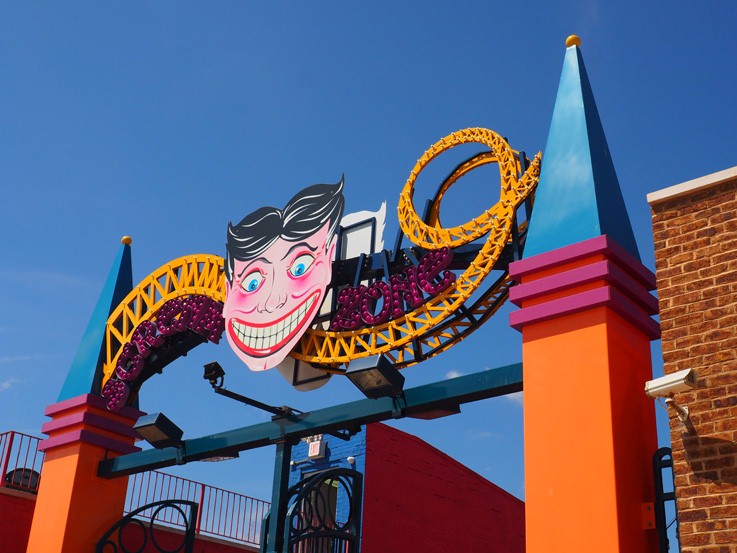
To a great extent, traveling sideshows were as dangerous, dirty, degenerate, and exciting as Disneyland is safe, clean, wholesome, and bland.
-Hammer, Carl & Bosker, Gideon. Freak Show: Sideshow Banner Art
The first structures in Coney Island were erected in the 1840s; many people protested development of the land and wanted it preserved as a natural park, as one of the features of the land’s orientation is that the beach is never shaded. Eventually a compromise was reached where development beyond 1,000 feet south of Surf Avenue was prohibited. For eleven years between 1885 and 1896, the Coney Island Elephant was the first manmade structure immigrants to the United States would see, not the Statue of Liberty: a beacon of our commitment to leisure and fun. However, it wasn’t until the first half of the 20th century that Coney Island reached its zenith.
Coney Island saw its first freak show in 1880. A circus man who had brought his unemployed troupe to the beach for a holiday was struck by the business potential. Setting up banners, he began a practice that would prosper at Coney Island for at least sixty years. From these small beginnings, Coney Island became a center for freak shows. During the period of 1910-1940, no single place in the world had more human oddities on exhibit.
-Bogdan, Robert. Freak Show: Presenting Human Oddities for Amusement and Profit
It was the unique combination of beach, freak shows, and three competing amusement parks that made Coney Island insanely popular. People would flock to Lilliputia or “Midget City”, a miniature city built to look like a half-scale Nuremberg, Germany that housed 300 little people who lived and worked there. They’d line up to ride the Cannon Coaster, which had been designed for the car to leap a gap in the track (and redesigned when it didn’t work as planned), and whispered to one another about the rumors they’d heard about the deaths that happened during the initial test phase. They’d stand in outer space in the Trip to the Moon cyclorama. It was an exciting, dangerous, sexy place to be, and Coney Island thrived.
After World War II, public sensibilities changed. Not only had the general area declined due to neglect and the proliferation of crime, but it also became less socially acceptable to gawk at the disabled. The virtual elimination of the freak show in the United States was both a positive and a negative thing: negative because performers who had spent their lives giving performances and being on display found themselves without work almost overnight and made their already difficult situations even moreso. Positive because at that period in history, xenophobia ruled the day, and, appallingly, people of different races were exhibited as oddities–Filipinos as “dog-eating missing links” and blacks as “savages of Darkest Africa”. While freak shows can be said to have given certain disadvantaged people access to a community they would not have had otherwise, freak shows as they were can only be a relic of a less-educated past, a historical curiosity, as they have no place in a civilized society.
Nonetheless, Coney Island showman Todd Robbins has continued to keep the magic of sideshows before the public. He has worked at the last ten-in-one, Sideshows by the Seashore in Coney Island, and he is dean of the Coney Island Sideshow School, which continues to teach fire eating and other essential arts and secrets of the the ten-in-one era….Perhaps it is not yet time to fold the last tent. In the meantime, we ask you to please step this way. The egress is just ahead.
-Nickell, Joe. Secrets of the Sideshows
However, the revitalization of the freak show is a wonder. Groups of self-identified freaks around the country and particularly in Coney Island have turned the old shows on their heads. The performers today, both natural-born and self-made, choose to perform. They have agency and their own reasons for participating; the show is about who they are as people and what they can do, not what they look like. 100 years ago, Erik Paluszak, stage name The Velvet Crayon, a man born with Osteogenesis Imperfecta, may have had no option in life but to be put on display for his anatomy. Today, he chooses to be part of the 10-in-One on Coney Island and while he invites you to look at him and ask questions if you’d like, his act is about his buzzy psychadelic rock music: songs about legos, songs about being a freak, ruminations on monsters, and responses to The Flaming Lips. In the modern freak show, audience members are invited to participate, to be an exhibit themselves. In the modern freak show, we’re all freaks.
Coney Island, as Gersh Kuntzman says, is a dump. He means it as a compliment. Its grittiness is refreshing…The stage has been set up in front of a giant Nathan’s billboard that runs along Stillwell Avenue on the side wall of the hot-dog stand. The left side of the wall is home to what the Sheas call the ‘two-dimensional Mount Rushmore of competitive eating”: a giant photo montage of past contest winners, incorporating a digital clock that counts down the days, hours, and minutes until the next contest…Coney Island is still surprisingly dirty, for all the talk of revitalization. Right across the street from Nathan’s is a line of frumpy stores spilling trash into the sidewalk gutters.
-Fagone, Jason. Horsemen of the Esophagus: Competitive Eating and the Big Fat American Dream*
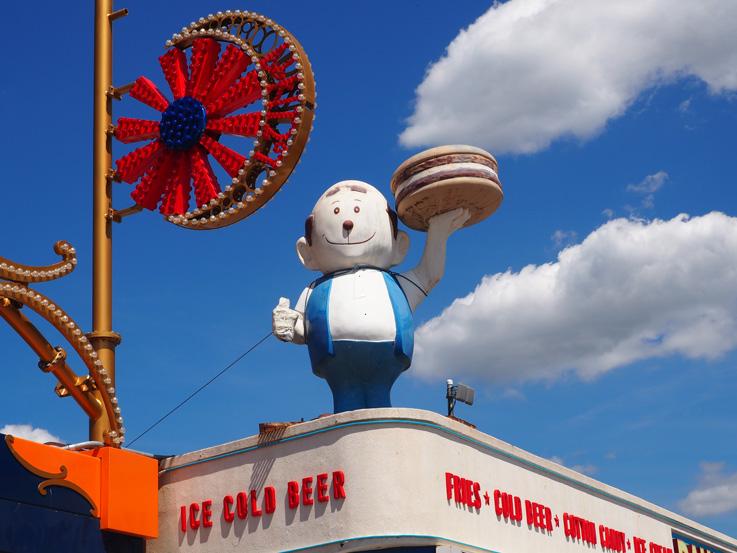 Another modern sideshow comes in the guise of competitive eating. Nathan’s Famous has held a hot dog eating contest on the 4th of July annually since they first opened, but in the late 1990s/early 2000s, the event began to attract national attention. Today, competitive eating is both legitimized and reviled, a celebration of excess and uniquely American, the gurgitators celebrated and pointed at for being what’s wrong with America, all reaching inside themselves to find their limits and push for something greater: a transcendence in their spectacle. And that, too, is Coney Island. It grows and shrinks. It recovers from economic and natural disasters. It rolls with the punches. It reinvents itself for the future while being utterly of the moment. Long live Coney Island.
Another modern sideshow comes in the guise of competitive eating. Nathan’s Famous has held a hot dog eating contest on the 4th of July annually since they first opened, but in the late 1990s/early 2000s, the event began to attract national attention. Today, competitive eating is both legitimized and reviled, a celebration of excess and uniquely American, the gurgitators celebrated and pointed at for being what’s wrong with America, all reaching inside themselves to find their limits and push for something greater: a transcendence in their spectacle. And that, too, is Coney Island. It grows and shrinks. It recovers from economic and natural disasters. It rolls with the punches. It reinvents itself for the future while being utterly of the moment. Long live Coney Island.
“No man can hope to be elected in his state without being photographed eating a hot dog at Nathan’s Famous.”
-Nelson Rockefeller, former governor of New York and Vice President of the United States
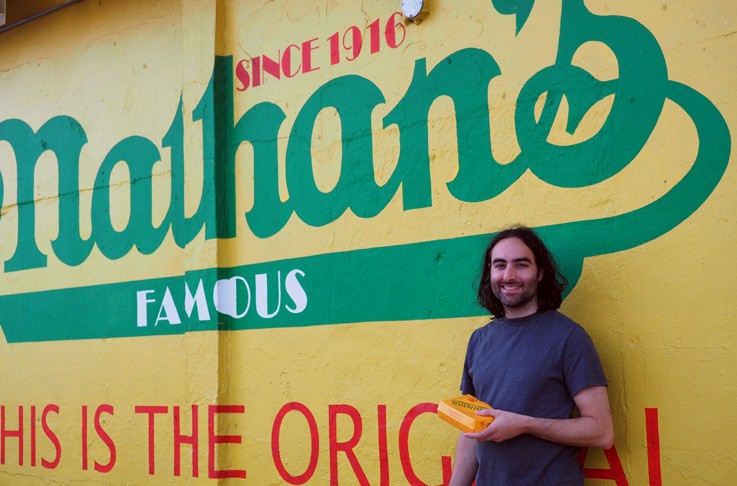 *All of the books cited are excellent resources on their respective topics, but Horsemen of the Esophagus is a particular favorite of mine. Fagone looks beyond the spectacle during the time period when competitive eating was experiencing its largest recognition on a nationwide scale and paints an intimate portrait of a few of the gurgitators : their motivations, their struggles, their humanity, while maintaining his objectivity about what the popularity of the sport means in terms of American culture, and the very real dangers that the competitors face. It’s in turns charming, concerning, and deeply moving. I bought it because I thought the title was funny. I never expected that it would resonate as it has, and I recommend it to anyone who thinks they may have even a vague interest in the subject matter or American culture as a whole.
*All of the books cited are excellent resources on their respective topics, but Horsemen of the Esophagus is a particular favorite of mine. Fagone looks beyond the spectacle during the time period when competitive eating was experiencing its largest recognition on a nationwide scale and paints an intimate portrait of a few of the gurgitators : their motivations, their struggles, their humanity, while maintaining his objectivity about what the popularity of the sport means in terms of American culture, and the very real dangers that the competitors face. It’s in turns charming, concerning, and deeply moving. I bought it because I thought the title was funny. I never expected that it would resonate as it has, and I recommend it to anyone who thinks they may have even a vague interest in the subject matter or American culture as a whole.

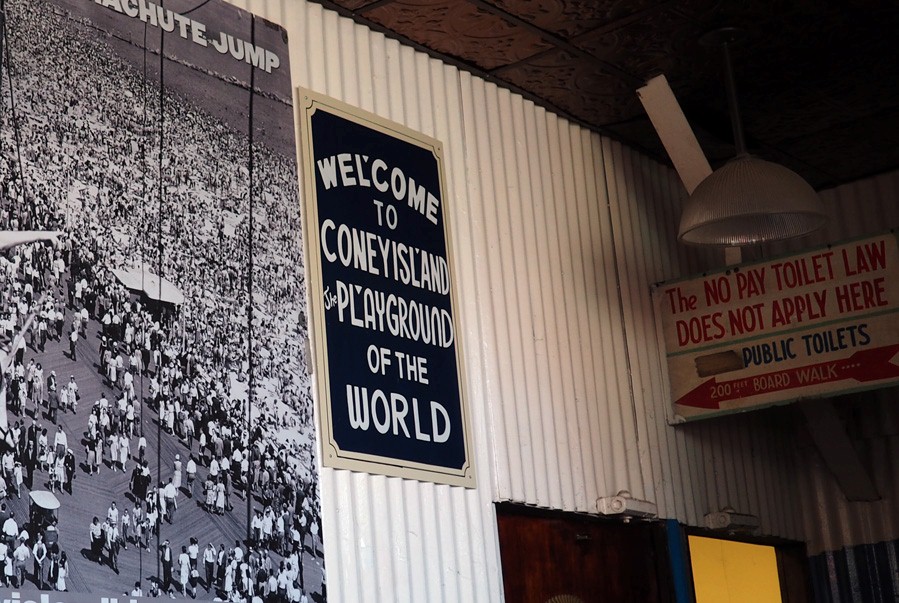

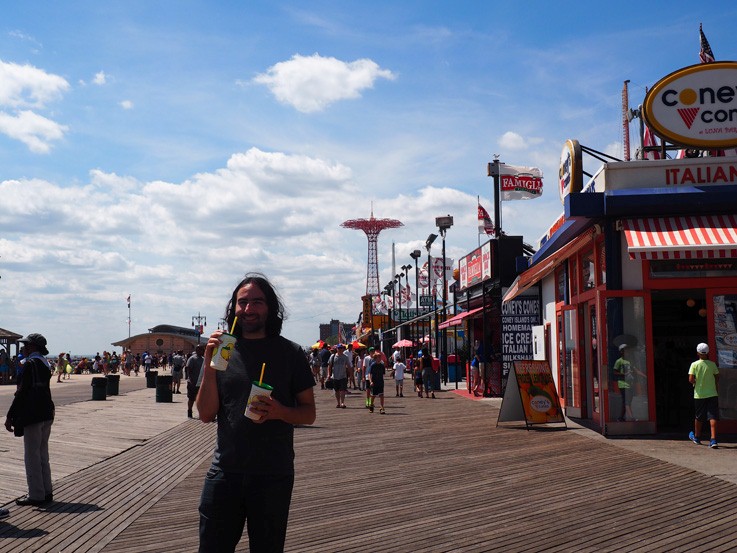
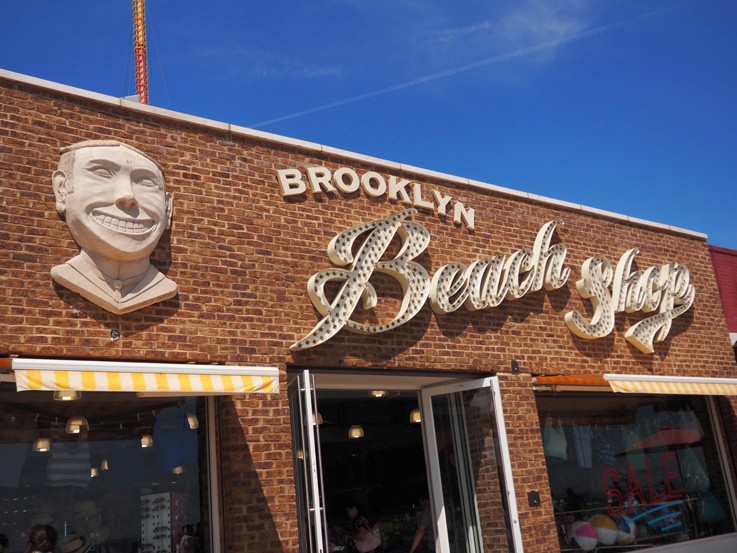
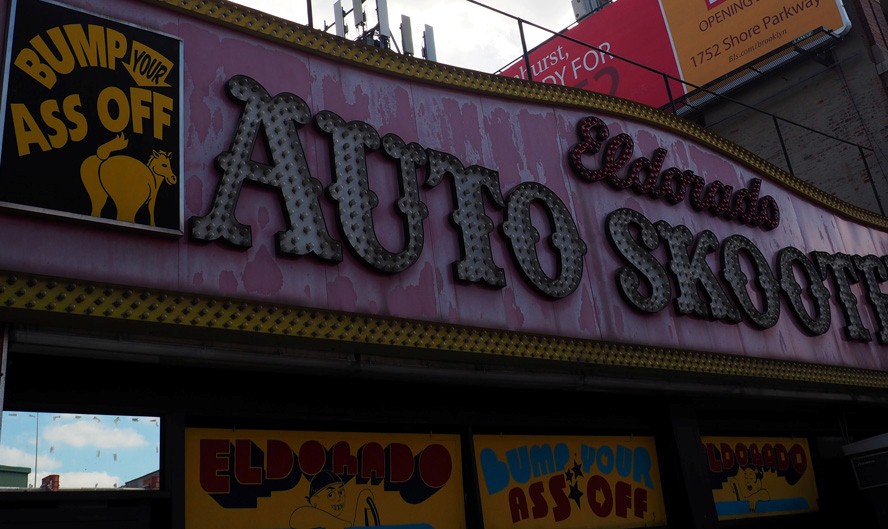
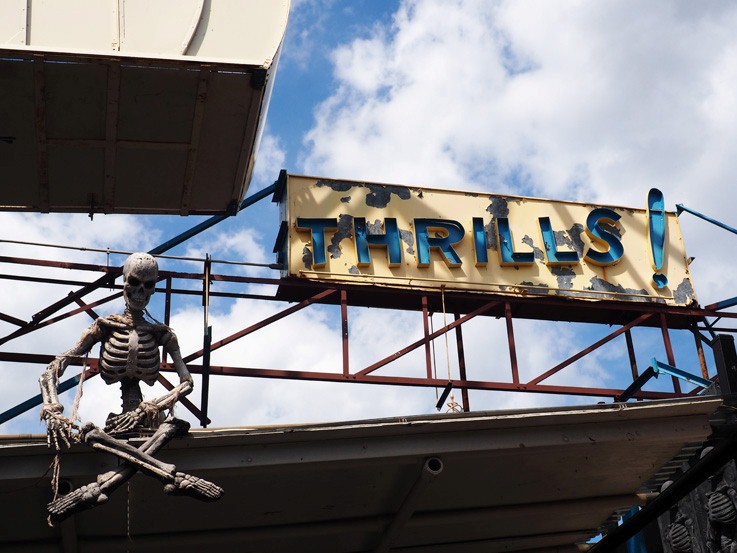
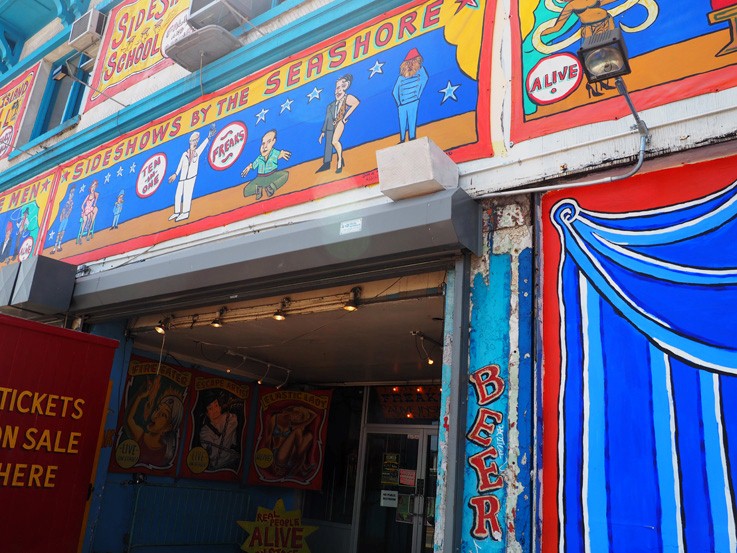
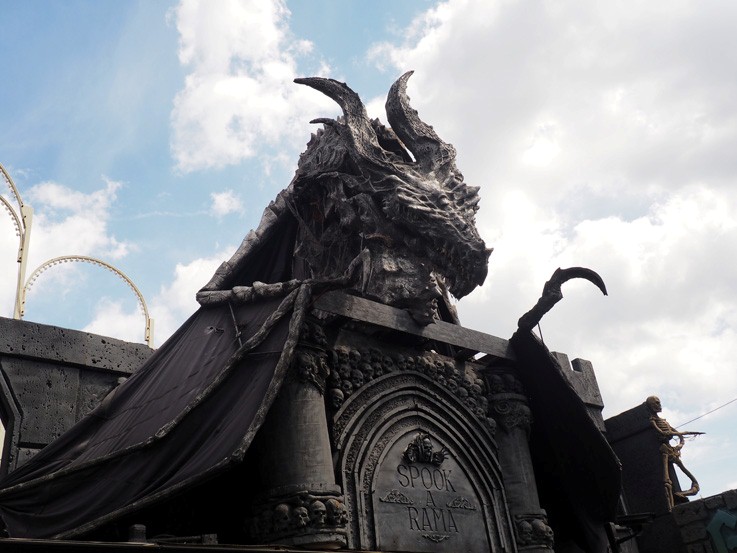
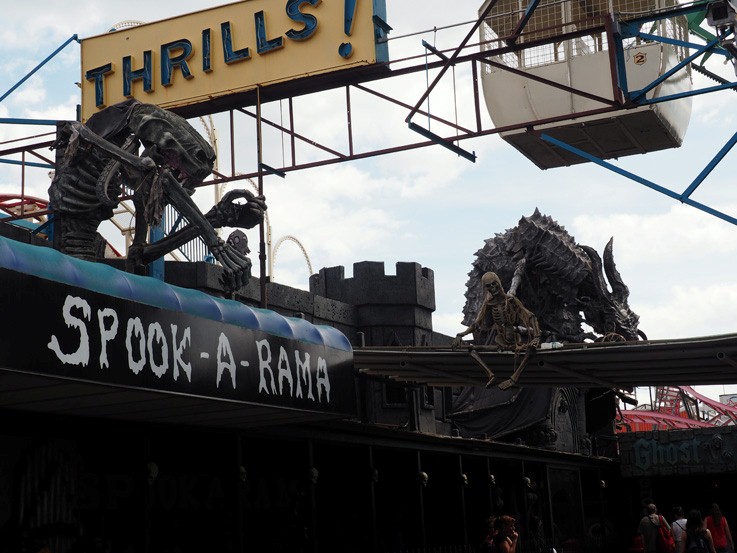

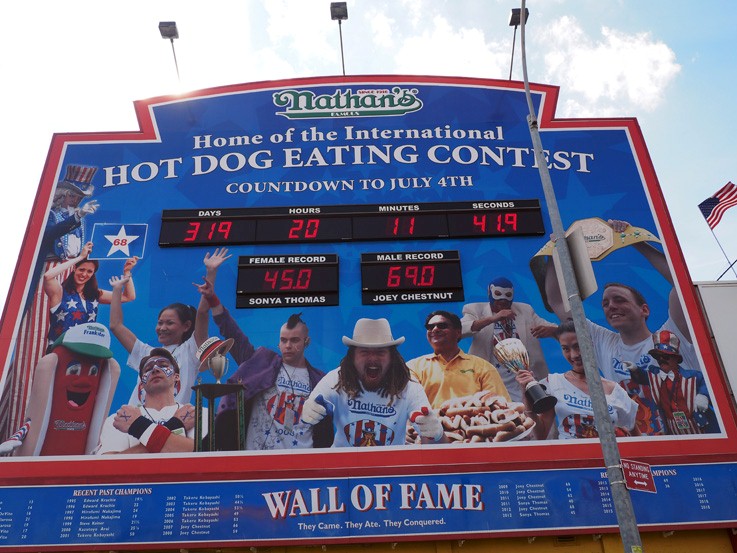
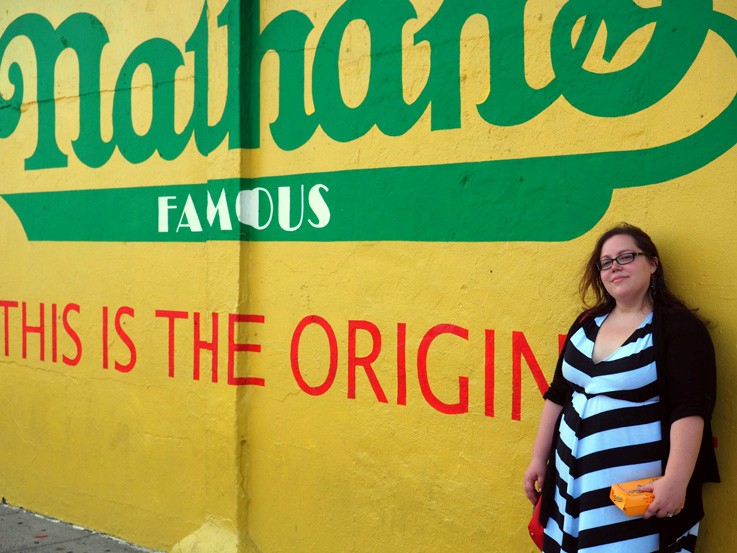

I’ve always wanted to visit Coney Island, I really need to get to the East Coast and put it on the top of my must-do list. Your photos make it look like so much fun!
It’s super fun! I would say that its biggest downside is that it’s expensive because they sell rides individually instead of park admission. Luna park does one of those unlimited rides with wristband deals, but the bigger rides are still excluded–and at $10 a crack for the newer rides like Thunder Bolt, it adds up fast! But it’s one of very few places where you can get the surf, sand, boardwalk, carnival experience all in one, so it’s absolutely worth a visit!